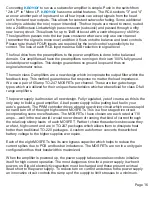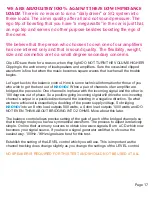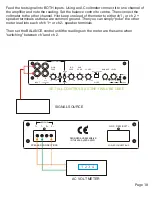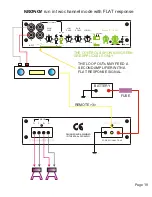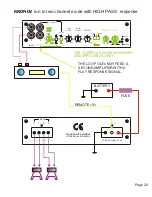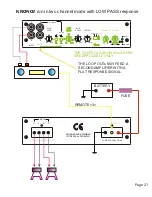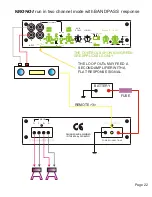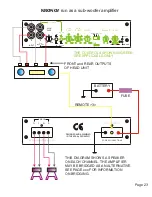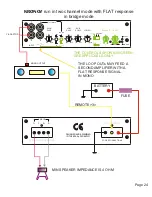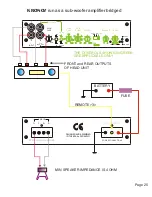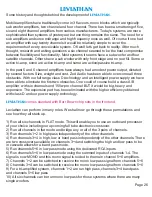
Installation Instructions
Location:
Choose a suitable location in the vehicle which will allow sufficient airflow over the
amplifier. The preferred mounting direction is with the heatsink fins in a vertical direction.
However we do recognize that this is not always possible.
Mounting the amplifier(s)
These amplifiers can be mounted in one of two ways. The first is by using the supplied
mounting feet. Each foot is bolted to the underside of the chassis using the supplied
metric M4 bolts. Please use a phillips screwdriver which fits the head of the bolts
correctly. Make sure that the bolts are tight but DO NOT over tighten them as you may
strip the threads in the bottom of the heat sink.
Depending on the surface to which the amplifier is mounted use either wood screws or a
machine screw with nut of either M5 or 10/32” size.
The second method is to forego the use of the four mounting feet and use metric M4 bolts
to bolt directly into the threaded holes on the underside of the heat sink. This method
requires that you determine the thickness of the mounting board and add 6mm (0.23”) to
it. Then select the correct length M4 bolt. If the bolt is too long you will feel it bottom out in
the threaded holes. Please be careful so as not to damage the threads in the bottom of
the heat sink. We supply four longer M4 bolts with each amplifier.
F
using of amplifiers. Almost every amplifier I have worked on is OVER FUSED - period!
Over fusing is just a stupid thing to do in the first place as it affords ZERO protection and
only results in printed circuit cards being burnt together with a bunch of expensive silicon.
The formula is quite simple. For class A/B amplifiers add up the total wattage of all
channels into the impedance into which they are driven. Divide this number by 18 and use
the closest value fuse. Example a 100w x 4 at 4 ohm amplifier is 400w total. Divide by 18
= 22.22 so use a 25A fuse. A 1500w amplifier requires a 90A fuse. I prefer to make up a
final fuse value by using several lower amperage fuses in parallel. This results in better
thermal efficiency as the current flow is spread over several pieces of metal.
We advocate strongly to under fuse and if you find under hard drive that the fuses
occasionally open up then it is way less drag on your wallet to replace some fuses with a
slightly higher value.
A repeat here for those who did not read the “low impedance” point I made. The higher
the impedance of the speaker (>4 ohm) the better the sound quality. These amplifiers are
NOT SPL tools, they are for listening to good music at reasonable levels - protect your
ears!
Use 4 or 8 ohm speakers and you will be surprised at the results.
Page 11


















